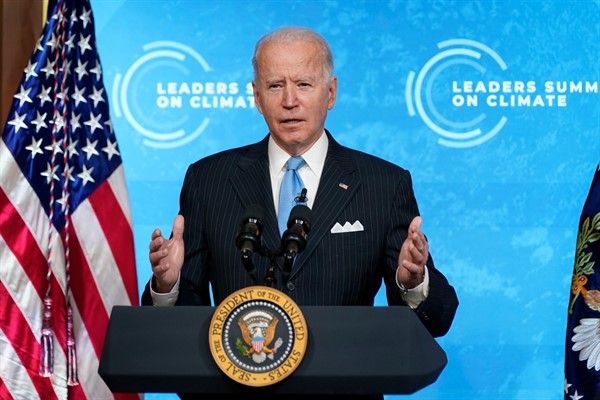U.S. President Joe Biden used last week’s Earth Day summit to reassert U.S. global climate leadership, pledging dramatic reductions in U.S. carbon emissions and encouraging ambitious commitments from other major emitters. After four wasted years under former President Donald Trump, U.S. climate policy is finally headed in the right direction. And not a moment too soon, given the accumulated stock of greenhouse gases already in the atmosphere. With less than a decade left to avoid a planetary catastrophe, Biden has reenergized hopes that the world can still meet the daunting Paris Agreement target of holding the rise in average global temperatures to 1.5 degrees Celsius.
The summit nonetheless leaves important, lingering questions, the most important of these being the feasibility and credibility of Biden’s plans. His topline commitment is to reduce U.S. greenhouse gas emissions by 50 to 52 percent from their 2005 levels by 2030. This new target is nearly double what then-President Barack Obama offered as the U.S. contribution to the Paris Agreement in 2015. The good news is that U.S. emissions have been declining. They were down 13 percent from the 2005 levels in 2019 and are estimated to have declined 21 percent from that baseline last year, thanks to the pandemic-induced recession. The bad news is that emissions are now rising as the U.S. economy recovers.
Many climate experts believe the U.S. can meet Biden’s target through a combination of new regulations, economic incentives and the rapid deployment of green technologies. But achieving it will require a national mobilization that makes the Manhattan Project look like an elementary school science fair. It implies a root and branch transformation of the U.S. economy and American society in only nine years, encompassing among other things a sweeping shift from fossil fuels to alternative energy sources; an overhaul of existing electricity generation and distribution networks; the adoption of more climate-friendly industrial, manufacturing and agricultural practices; massive investments in more efficient transportation, including electric vehicles; wholesale retrofitting of existing buildings; and widespread changes in consumer behavior. Nothing of this magnitude has ever been attempted.

